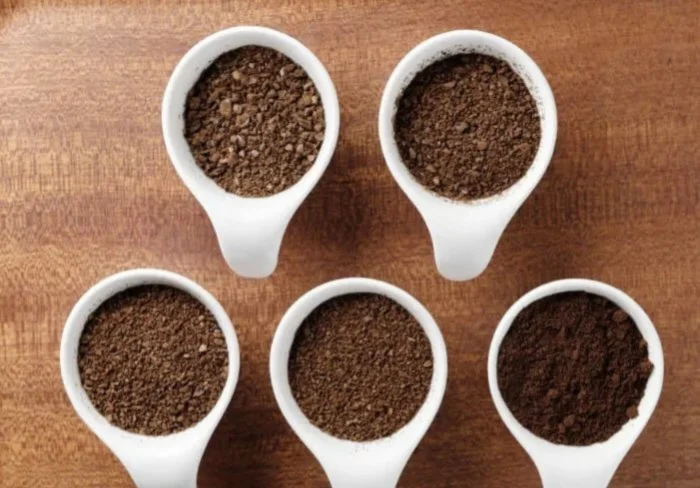Making the perfect espresso starts with the right amount of coffee. Too little, and your shot will be weak and underwhelming. Too much, and you risk over-extraction or even damaging your machine. Finding the ideal dose requires understanding several factors, including grind size, coffee freshness, and machine specifications. This guide will walk you through everything you need to know about measuring coffee for espresso.
Understanding Espresso Dose
Espresso dose refers to the amount of ground coffee used for a single shot. The standard dose for a single espresso is typically between 7 and 9 grams, while a double shot ranges from 14 to 18 grams. However, these numbers can vary depending on your preferences and equipment.
Why Dose Matters
Using the correct dose ensures balanced extraction. If you use too little coffee, water will pass through too quickly, resulting in a sour and watery shot. Too much coffee can lead to over-extraction, making the espresso bitter and harsh. Consistency in dosing also helps replicate the same quality shot every time.
Single vs. Double Shot
A single espresso shot is usually brewed with 7 to 9 grams of coffee, yielding about 30 milliliters of liquid. A double shot, the more common choice in cafes, uses 14 to 18 grams and produces around 60 milliliters. Many home baristas prefer double shots because they offer a richer flavor and are more versatile for milk-based drinks.
Factors Affecting Espresso Dose
Several variables influence how much coffee you should grind for espresso. Understanding these will help you adjust your dose for the best results.
Coffee Roast Level
Darker roasts are less dense than lighter roasts because they lose more moisture during roasting. This means you may need a slightly larger volume of dark roast beans to reach the same weight as a light roast. Experimentation is key to finding the right balance.
Grind Size and Consistency
The fineness of your grind affects extraction time and flavor. A finer grind increases resistance, slowing water flow and increasing extraction. A coarser grind does the opposite. If your shots pull too fast, try a finer grind or a slightly larger dose. If they pull too slow, adjust coarser or reduce the dose.
Machine and Portafilter Size
Different espresso machines and portafilters have varying basket capacities. A standard double-shot basket holds 14 to 18 grams, while some precision baskets are designed for 18 to 20 grams. Check your machine’s manual or measure your basket’s capacity to determine the optimal dose.
Tamping Pressure
Tamping compresses the coffee grounds, creating resistance for the water. Uneven or inconsistent tamping can lead to channeling, where water bypasses parts of the coffee bed. While tamping pressure doesn’t change the dose, it affects how the water interacts with the grounds, influencing extraction.
Measuring Coffee for Espresso
Precision is crucial when dosing espresso. Even a one-gram difference can alter the taste significantly. Here’s how to measure accurately.
Using a Scale
A digital scale with 0.1-gram precision is the best tool for measuring coffee. Place your portafilter on the scale, tare it to zero, then add coffee until you reach your desired dose. This method eliminates guesswork and ensures consistency.
Volume vs. Weight
While some beginners use scoops or tablespoons, volume measurements are unreliable because grind size affects how much coffee fits in a spoon. Weight is always more accurate, so investing in a good scale is worthwhile.
Adjusting for Taste
Start with a standard dose (e.g., 18 grams for a double shot) and pull a shot. If it tastes sour, try increasing the dose slightly or grinding finer. If it’s bitter, reduce the dose or grind coarser. Small adjustments can make a big difference.
Common Mistakes and How to Avoid Them
Even experienced baristas make dosing errors. Here are some common pitfalls and how to fix them.
Inconsistent Dosing
Eyeballing the dose leads to variations in flavor. Always use a scale to ensure the same amount of coffee is used for each shot.
Overfilling the Basket
If coffee grounds spill over the basket’s rim before tamping, you’re using too much. This can prevent proper sealing in the group head, causing leaks and uneven extraction.
Underdosing
Too little coffee creates a weak shot with little crema. If the puck appears soupy after brewing, increase your dose slightly.
Ignoring Freshness
Freshly roasted coffee releases gases that affect extraction. As coffee ages, you may need to adjust the dose or grind to compensate for decreased freshness.
Advanced Dosing Techniques
Once you master the basics, you can explore advanced methods to refine your espresso.
The Ristretto and Lungo
A ristretto is a shorter, more concentrated shot using the same dose but less water (about 20 milliliters for a double). A lungo is the opposite, with more water (up to 90 milliliters). Adjusting the dose and grind can help achieve these variations.
Pre-Infusion and Pressure Profiling
Some machines allow pre-infusion, where water saturates the grounds at low pressure before full extraction. This can reduce channeling and improve flavor, sometimes allowing for a slightly higher dose.
Single-Origin vs. Blends
Single-origin coffees may behave differently than blends due to density and roast variations. You might need to tweak the dose for optimal extraction when switching beans.
Conclusion
Finding the right coffee dose for espresso is a balance of science and personal preference. Start with standard measurements, then adjust based on taste, machine performance, and bean characteristics. With practice, you’ll develop an intuition for dosing that enhances every shot you pull.
By paying attention to grind size, freshness, and extraction time, you can consistently brew espresso that’s rich, balanced, and full of flavor. Whether you’re a home enthusiast or a professional barista, mastering your dose is a crucial step toward espresso perfection.
Related topics:
Where to Buy Stovetop Espresso Maker
How Many Ounces of Espresso Beans in a Shot?


